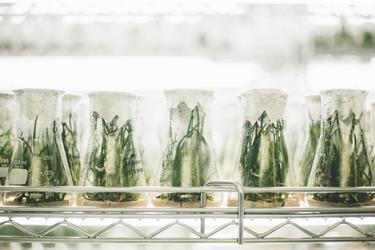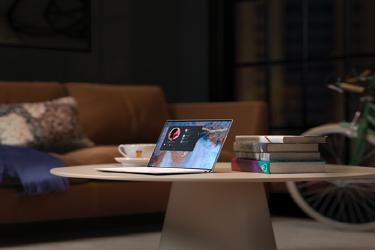
If you’ve been following along in this series, you probably started to do less with your system and keep things raw, which means less time lost and more time to work on important things. If you’re joining in this article, you can look at the previous one in the series here: Structure and Formatting.
At this point, your notes should be full of high-quality ideas and minimally formatted, and so now we keep that system going and build more and more notes, right? Well, probably not; you see, collecting more and more is fine up to a point, but information collection should be like a river, not a dam. It would be best if you had an output mechanism that allows you to use those notes you collected. That output can be an article, a book, a podcast, a video, a side business; the choices are nearly infinite, as long as you create something from those notes and ideas. Having a consistent output will also make it, so you don’t collect for the sake of collecting, and your notes spend their life in your system collecting digital dust. Why would you not just collect things, though? Aren’t notes just made to be collected?
The process of creating something new is indeed painful and takes time and effort, which was why I argued you should make your note application as friendly and fun as possible in the first article of this series. Creating something new out of your notes has a lot of upsides too, it helps the learning process, helps to go deeper on a subject, helps build things faster, and grows over time. With this in mind, when should you create new notes or do research instead of using what you already have on hand?
Collecting new notes
Let’s say you have to write a new article about a hobby you’ve been practicing for a couple of years already, how would you go about it? You could sit down and go thru the notes you’ve already taken on the subject with your observation and reading, or you could start to look for other sources about that hobbies and do research. One of that two ways will result in you using your note, and the other will result in a new note. Which is best? New fresh notes should be better since then you add new ideas to your writing, right? You will indeed get new ideas in with that method, and if you repeat this process every time you create some work, it will increase the sheer amount of notes in your system. What about your previous notes or the notes from the previous article you read, though? They’ll end up waiting around gathering digital cobweb in your vault while you play with the new shiny fresh notes.
That methodology might seem fine at first, and you can get by for a while that way, but you’re ultimately limiting yourself. Doing it that way, you’ve limited your possible growth in knowledge and output to the number of hours you can spend reading new things and add them to the system. You effectively became your own bottleneck in your growth and the growth of your system. That also means your system will only grow linearly, not exponentially, for each note added. The opposite method is reusing the notes from previous works first, then as needed, go out to get new ones. Doing it this way will enable you to create things out of your notes without much effort and do it faster since you don’t need to spend time reading new things. That’s how you get to exponential growth; if you can reuse one note in multiple projects adding new notes now influences other projects, which creates new notes, repeat.
Reusing notes first across projects as your default also creates more serendipity across projects. Since each of those projects is different in some shape or form, the ideas from the notes have a lot more chance to generate new ideas and new connections. Developing a new note for “single-use,” on the other hand, will only create serendipity this once and probably only if it’s already similar. Also, because it’s so expensive in time and effort, you won’t want to go too much out of the project boundaries since it could be for nothing. That reaction, in turn, makes it hard to have unique ideas and see connections that could be interesting but not strictly related. Ultimately the easiest way to go around all of this is to put some constraint in your system that forces you to use old notes.
Constraint on new notes
It’s been known for a while that constraints are an excellent way to make our brain focus and get sharp. Things created under constraint will often be more creative and achieved faster than comparable projects. While this might not be sustainable in all fields, we don’t want to burn out or stress ourselves unnecessarily; it’s a powerful tool for creative work. What if you only had access to your current notes to create an article? What if you had to write an entire essay for next week without the internet (given that your note application can work offline)? How would you go about it?
Those light constraints are also surprisingly sustainable, they don’t create stress or burden yourself, yet they have the same effect on creativity and focus. Once you start to look into it, you will see that you can try a surprising amount of things. What works best will depend on what type of project you’re creating. For example, you could also set a time limit for research before starting a project and preventing yourself from adding anything after. The main idea is to try and play with constraints and your workflow to focus on what you already have. This series of articles you’re reading is the result of my experimentation in that arena. Given that I could write this 3 part series, I would call this experiment a success in my case.
Some of you might still see constraint as an ‘evil’ thing schools forced upon you, so you had to stay up till 5 am to finish that paper. If constraints are forced on you or done wrong, they can be ‘evil,’ but they don’t have to be. First off, do not create or add stress to your life. You want to find a good balance. You want some constraints that will make sure you keep going forward and stay focus without being too much because that is where problems happen. If you go too far, you will stress yourself and put on too much pressure, which will stop the creative process and cancel out the benefits. Putting just the right amount of constraints instead will force you to find new ways to be creative with what you already have. Doing this is also where you see a shift in how you collect, process notes, and look into your notes; you will have a new lens focusing on collecting high-quality, essential things so you can have a good set of material to start with.
Reusing notes give you a massive head start
All those notes you’ve accumulated over time allow you to cancel out the biggest creative work problem, the “blank page.” There’s no such thing as a blank page when you have a note system collecting high-quality notes. You will always find something in there that you can use as a starting block for your project. That could be an old PDF template you created a while ago, a presentation you assisted last month on a similar topic, a website you visited that inspired you. The possibilities are only limited by your collection here and your willingness to reuse the things. That sort of preparation is best done at the very start of a project before you even start to work on the actual project.
When you’re about to start a new project, whatever it might be, take an extra 10-15 minutes before you do anything else to search in your current notes for things you could use. You can also brainstorm places or search terms where things could be and then dive in and look around. As you search around, you will probably remember other areas, projects, notes that could help. From that point, you gather all those things together in the new project note/folder, and you just killed the “blank page.” Doing it this way, you’ll soon realize many things we do every day are very similar in structure and can be abstracted a bit and reused; that’s a huge time saver right there too.
That simple preparation technique will make sure you never start from scratch and, in turn, increase the reuse of your notes. That mechanism is also how notes increase your output exponentially since one note will be reused in multiple projects or as material in the future. On top of giving you a good head start in both time spent researching and writing, it will also reduce the creation pain since you won’t have to reinvent the wheel every time. Once you get a good workflow going with your projects, you should quickly see that your notes won’t be gathering digital dust anymore. They will live and grow with you over the years to come, as they should.


